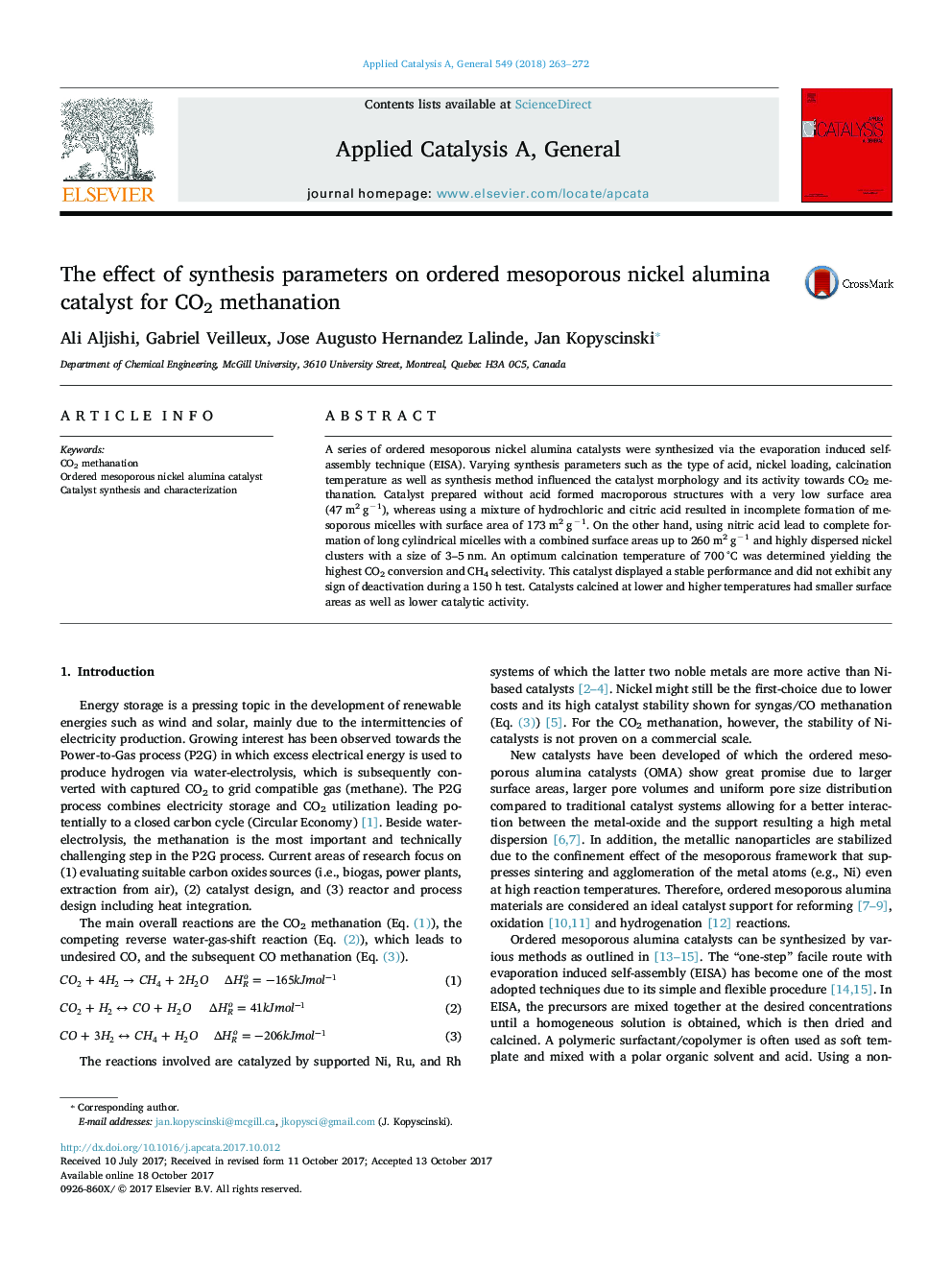| Article ID | Journal | Published Year | Pages | File Type |
|---|---|---|---|---|
| 6453229 | Applied Catalysis A: General | 2018 | 10 Pages |
â¢Compared to hydrochloric and citric acid, using nitric acid during the synthesis led to ordered mesoporous catalysts with higher surface area and superior catalytic activity.â¢Evaporation induced self-assembly (also known as “one pot”) synthesis technique produced catalysts with highly dispersed nickel clusters with very small diameter of around 2.8 nm.â¢Ordered mesoporous nickel alumina catalyst calcined at 700 °C exhibited the best results towards CO2 methanation.â¢At lower reaction temperatures (<400 °C) the CO2 methanation proceeds most likely via the direct dissociation of CO2.
A series of ordered mesoporous nickel alumina catalysts were synthesized via the evaporation induced self-assembly technique (EISA). Varying synthesis parameters such as the type of acid, nickel loading, calcination temperature as well as synthesis method influenced the catalyst morphology and its activity towards CO2 methanation. Catalyst prepared without acid formed macroporous structures with a very low surface area (47 m2 gâ1), whereas using a mixture of hydrochloric and citric acid resulted in incomplete formation of mesoporous micelles with surface area of 173 m2 gâ1. On the other hand, using nitric acid lead to complete formation of long cylindrical micelles with a combined surface areas up to 260 m2 gâ1 and highly dispersed nickel clusters with a size of 3-5 nm. An optimum calcination temperature of 700 °C was determined yielding the highest CO2 conversion and CH4 selectivity. This catalyst displayed a stable performance and did not exhibit any sign of deactivation during a 150 h test. Catalysts calcined at lower and higher temperatures had smaller surface areas as well as lower catalytic activity.
Graphical abstractDownload high-res image (232KB)Download full-size image
